AAPI Heritage Month Brings Millions of New Investment to Asian American Communities


Demonstrators gather for the Rise Up With Asians rally in San Francisco on March 31, 2021, days after a mass shooting in Atlanta claimed the lives of eight people, six of them Asian American women. (Image credit: Jason Leung/Unsplash)
The start of Asian American and Pacific Islander (AAPI) Heritage Month brought with it new investments that are set to have a major impact on Asian American communities and causes.
In two recent examples, last week the newly formed Asian American Foundation committed $65 million over five years to back nonprofits that are creating positive change in AAPI communities. A week earlier, U.S. lawmakers, educators and community organizers launched the Vincent Chin Institute to advance the movement against anti-Asian hate, adding to a number of other commitments from philanthropists, corporations and community groups.
Let's take a closer look at these two major commitments, the impact they can have on Asian Americans, Pacific Islanders and their communities, and how more companies can get involved.
The Asian American Foundation rolls out plans to invest more than $1 billion in nonprofits serving AAPI communities
The Asian American Foundation launched in 2021 in response to the uptick in violence against Asian Americans and Pacific Islanders and to address historic under-investment in AAPI communities.
Less than 0.20 percent of giving from foundations and less than 1 percent of corporate giving goes to organizations serving AAPI communities, according to the Foundation. In response, it launched the multi-year Giving Challenge campaign to bring partners together to donate directly to the community. In 2021, the campaign rallied more than 130 partners — including 70 companies and 13 foundations — to commit $1.1 billion in capital and in-kind donations.
Of that total, $730 million was already provided to the Foundation as of 2022, and last week it announced plans for how it will disburse the money. In its new Portfolio Strategy, the Foundation emphasizes a community-based approach that looks to provide capital and assistance to locally-led nonprofits that directly serve AAPI communities. It will disburse an initial $65 million in grants to these nonprofits over the next five years, with a focus on education, community development, anti-hate campaigns, and building representation to drive a new narrative about AAPI communities in the media.
Beyond existing corporate partners — which range from Capital One and Accenture to Etsy, JCPenney and Levi-Strauss — the Foundation is inviting new partners to co-invest in the nonprofits it identifies and maximize impact in the communities they serve. Click here to get involved.
The Vincent Chin Institute strengthens the movement against anti-Asian hate
Hate crimes against Asian Americans and Pacific Islanders have increased sharply in recent years, as AAPI communities were unfairly scapegoated in the early months of the coronavirus pandemic — setting off a wave of harmful rhetoric from some politicians and media.
Anti-Asian hate incidents increased by 77 percent between 2019 and 2020 and by 339 percent between 2020 and 2021. While law enforcement recorded fewer of these incidents last year, the rate is still "disturbingly elevated" compared to pre-pandemic levels, Brian Levin, director of the Center for the Study of Hate and Extremism at California State University-San Bernardino, told Voice of America.
These statistics send chilling effects through Asian American communities, as people fear they or a loved one will be next. More than 70 percent of Asian Americans worry about hate-based threats or violence at least sometimes, according to 2022 polling from the Pew Research Center. Of those, about a third said they changed their daily behaviors as a result of these concerns.
The newly launched Vincent Chin Institute aims to galvanize organizers in the movement against anti-Asian hate. The organization is named for a 28-year-old Chinese-American man who was murdered in a hate crime in 1982, amidst another wave of anti-Asian (and specifically anti-Japanese) sentiment in the U.S. — meant as a stark reminder of the dangerous effects of racist rhetoric.
The new organization centers on bringing activists and educators together to drive new narratives around AAPI communities, elevate the public's understanding of historic discrimination against AAPI people, and establish new networks of local organizations working toward these goals. AAPI congressional leaders — including Rep. Grace Meng (D-N.Y.) and Rep. Judy Chu (D-Calif.) — are involved in the effort, along with activists and educators from across the country.
Among its first actions, the institute launched the second edition of the Vincent Chin Legacy Guide, a free resource outlining the dark history of anti-Asian racism in the U.S. for use primarily by K-12 educators, the AAPI-focused outlet AsAmNews reported. Such resources are vital as increasingly competitive posturing around China circles through political circles and leaches out into the public discourse. When countering such narratives in the halls of Congress, Chu often brings up Chin's story.
“Each time we take on this fight … I talk about what happened to Vincent Chin. Some members of Congress are shocked because they never even heard of [Chin’s] story,” Chu told AsAmNews. “Which is why we need the Vincent Chin Institute and why we need the second edition of The Vincent Chin legacy guide. It will be phenomenal in helping all communities learn about Vincent’s story and the consequences of xenophobic rhetoric.”
Founding corporate partners including Mastercard and JPMorgan Chase helped to launched the Institute, and continued support will be needed to power its work — leaving ample opportunity for more businesses to get involved. Scroll down to the bottom here to learn how to take part.
Green Bonds are Ready For a Comeback


The bond market sneezed in 2022, and green bonds caught the same cold. Fortunately, according to some analysts, green bonds are in the position to rebound this year. In the case of municipal green bonds, that provides new opportunities for cities to make climate-resilient investments in their future, and corporate citizens are among those to reap the benefits.
What are green bonds?
Assets in global sustainable and green bonds reached $516 billion at the end of 2022, an elevenfold increase over the past decade, according to a recent analysis from Morningstar. Verizon, one of the largest corporate green bond issuers in the U.S., made headlines this week with its fifth billion-dollar green bond since 2019.
So, what are green bonds anyway, and why do they matter in the world of finance? As with any bond, green bonds are issued by companies and governments as a way to raise money. Investors purchase the bond, and they're paid back later with interest. But in the case of green and sustainability-linked bonds, the funds are specifically earmarked for projects that positively benefit people and the environment.
As Fidelity described in a 2021 white paper, green bonds reflect a broader focus on socially and environmentally beneficial goals among U.S. investors. “This trend toward sustainability, commonly demonstrated through reusable bags, hybrid cars and renewable energy sources, has also gained popularity in the municipal bond market through the issuance of green bonds," the white paper reads. "Municipal green bonds, issued by state and local governments to fund environmentally beneficial capital projects, are not currently a large percentage of total municipal bond issuance, but have recently gained significant traction."
The municipal green bond trend is relatively new. Massachusetts kickstarted the movement in 2013, and green bonds are still a small part of the overall municipal market, which totaled $470 billion in 2020. Municipal green bond issuance tripled over a rolling five year-period ending in 2020, with an impressive 40 percent jump between the final two years to reach a then-record of $14 billion, according to Fidelity's analysis.
Despite the strong showing, Fidelity emphasized that green bonds are a new phenomenon. “[It] is too soon to determine if there will be a consistent cost advantage” for issuers, investors or municipalities over the long run, Fidelity found, though the firm did make note of “the intangible environmentally friendly purpose for which the bonds are issued has its own intrinsic value.”
A comeback for green bonds
Fidelity’s outlook was prescient. In February of last year, S&P Global explored the possibility of a jump to $60 billion for municipal green bonds in 2022. However, when the dust settled after a tumultuous economic year, a mixed picture emerged for bond markets overall.
“Up until 2022, green bond funds experienced a relatively sanguine period of positive returns and low volatility compared with conventional bond products,” Morningstar wrote. “That relationship flipped, however, last year, as green bond funds experienced steeper losses and higher volatility in 2022.”
Still, the picture for green bonds was more rosy than the overall bond market, which took a beating amidst economic uncertainty last year. "Net inflows into global sustainable bond funds slowed down in 2022 but remained positive, while traditional bond funds experienced massive outflows in the challenging market environment," Morningstar found.
Further, it appears that a rebound is taking shape. In January of this year, S&P Global took another look at the global situation for corporate green bond issuance. Although issuance dropped steeply from 2021 to 2022, S&P described the context of a broader slowdown in bond issuance overall, driven by “volatile markets, inflation, rising interest rates and geopolitical uncertainty.”
S&P painted a more optimistic picture for 2023, based largely on supportive policies in China and the U.S., where the new federal climate and energy legislation promoted by President Joe Biden provides for $386 billion in spending over the next 10 years and a $265 billion increase in tax incentives.
S&P also cited Charlotte Edwards, a head of environmental, social and governance (ESG) research at Barclays, who expects growth in corporate green bond issuance to increase 30 percent this year, rebounding to 2021 levels.
A new threat for municipal green bonds
Here in the U.S., the renewed activity in the municipal green bond area could be hampered by partisan Republican policies designed to thwart ESG investment under the umbrella of the “woke capitalism” canard.
For example, last week in Florida, Republican Gov. Ron DeSantis signed anti-ESG legislation that prohibits some ESG bond sales outright and prevents state office holders from considering ESG goals.
In addition to raising potential legal liabilities for financial officers, Reuters took note of how the new law could negatively impact municipal bonds. “Lawyers and credit analysts said the new law could deny municipalities access to large pools of ESG-mandated capital," Isla Binnie and Ross Kerber of Reuters reported, citing Thomas Torgerson, co-head of global sovereign ratings at DBRS Morningstar.
Those concerns are well founded. In Texas, the city of Anna lost more than $277,000 on a bond sale last year after Republican Gov. Greg Abbott signed anti-ESG legislation into law. The loss was attributed to a drop in competition following the new law, which precluded the highest bidder.
Based on a Wharton analysis of the Texas law, the firm Econsult Solutions, Inc. anticipates millions more in losses for other states considering anti-ESG legislation, including Kentucky, Louisiana, Missouri, Oklahoma and West Virginia as well as Florida.
Signs municipal green bonds are ready to turn the corner
Municipalities in states that are free of partisan interference can expect to fare better, along with their taxpayers, residents and businesses.
For example, the city of Turlock, California, has gained a significant new corporate citizen thanks to a $63 million municipal green bond issued by the California Public Finance Authority. The company in question is Divert, Inc., which describes itself as “an impact technology company on a mission to Protect the Value of Food.”
In April, Divert broke ground on its new facility in Turlock, which will convert food waste into carbon-negative renewable energy. In addition to helping California meet its climate goals, the new facility will create new jobs in Turlock and help the company’s retail and food industry clients improve their sustainability profiles by cutting down on food waste.
Divert clients can also anticipate bottom-line benefits from data collected through the waste-to-energy operation. The overall plan also encompasses a food donation program, helping to reduce food waste at the starting point.
Another example involves community choice aggregation, which is the means by which municipalities can join forces to lobby their utility for more clean energy.
Only a handful of states have aggregation laws on the books, and one of them is California. Earlier this year, the California Community Choice Financing Authority issued municipal green bonds totaling almost $1 billion to the state’s largest community choice aggregator, Clean Power Alliance. The Alliance projects its renewable energy costs to decrease by an average of $8.3 million per year over the initial eight-year period of the bonds. The savings will be passed along to ratepayers.
It's unfortunate that businesses and residents in some Republican-led states will have to pass on opportunities like these, but that is a problem that corporate leaders can — and should — take up with their elected representatives.
Image credit: Akil Mazumder/Pexels
Do More Good with a Tribally-Owned Business


A Seneca Nation family. Tribally-owned businesses generate profits that flow directly to the Native Nation and fund the support services its members need.
Businesses looking to amplify their environmental, social and governance (ESG) goals should consider the added impact that comes from working with a tribally-owned business. The mission of a business owned by a Native Nation is to generate income that will improve the lives of its people. Every other for-profit business seeks to maximize value for its owners. If a tribally-owned business can serve your business just as well as another (or better!), your company will simply “do more good” by working with one.
Why Native Nations form businesses
There are 574 federally recognized Native Nations in the United States. Many have sovereign territories on which their members live. For some Native Nations, their territory consists of a sliver of their ancestral homeland; for others, their territory is nowhere near their ancestral homeland. Still others have no territory at all.
It is widely recognized that Native communities have not shared in the wealth generated from their lands. Native communities are also underserved compared to other communities in the United States. These factors have contributed to conditions where poverty is high, education levels are low, health disparities still exist, and opportunities are scarce. The reasons for this are complicated, generational and well-documented.
With few exceptions, Native Nations do not have tax revenue to fund the services they provide to their members. Instead, they need to generate other forms of income to provide for the health, safety, education and social support their community members need.
Increasingly over recent decades, Native Nations have established wholly-owned businesses to generate profits that flow directly to the Native Nation and fund the support services needed by its members. While many of these businesses have done well, the revenue they generate is still not enough for most Native Nations to provide the same services to their members that most other Americans get from their federal, state and local governments. Tribally-owned businesses are now expanding in the competitive marketplace, and there are more opportunities than ever to work with them.

What makes a tribally-owned business unique?
A tribally-owned business is a for-profit business owned directly by a Native Nation, and not by any specific shareholders. Profits flow directly to the Native Nation and are used by its government to directly fund services and support for its members. The organization I lead is one such business, owned by the Seneca Nation located in the Western New York region. I regularly say that while the mission of Seneca Holdings is to generate profits — like any other business — we operate more like a nonprofit than a for-profit entity. We know that every dollar that we earn, and every dollar that we save, goes directly back to the Seneca Nation.
There are many exceptional businesses owned by minorities, women, veterans and other disadvantaged individuals that are worth supporting. The difference, which you can decide for yourself how much to value, is that the mission of a tribally-owned business is to improve the lives of an entire community, particularly those in need. This is why we think of our organization as operating more like a nonprofit than a for-profit business.
There are also unique capabilities that tribally-owned businesses can provide their customers that may not be available to smaller businesses. Seneca Holdings, for example, leverages its capabilities across multiple industries to provide back-office support and financial stability that is more mature and robust than any of our individual businesses would have on its own.
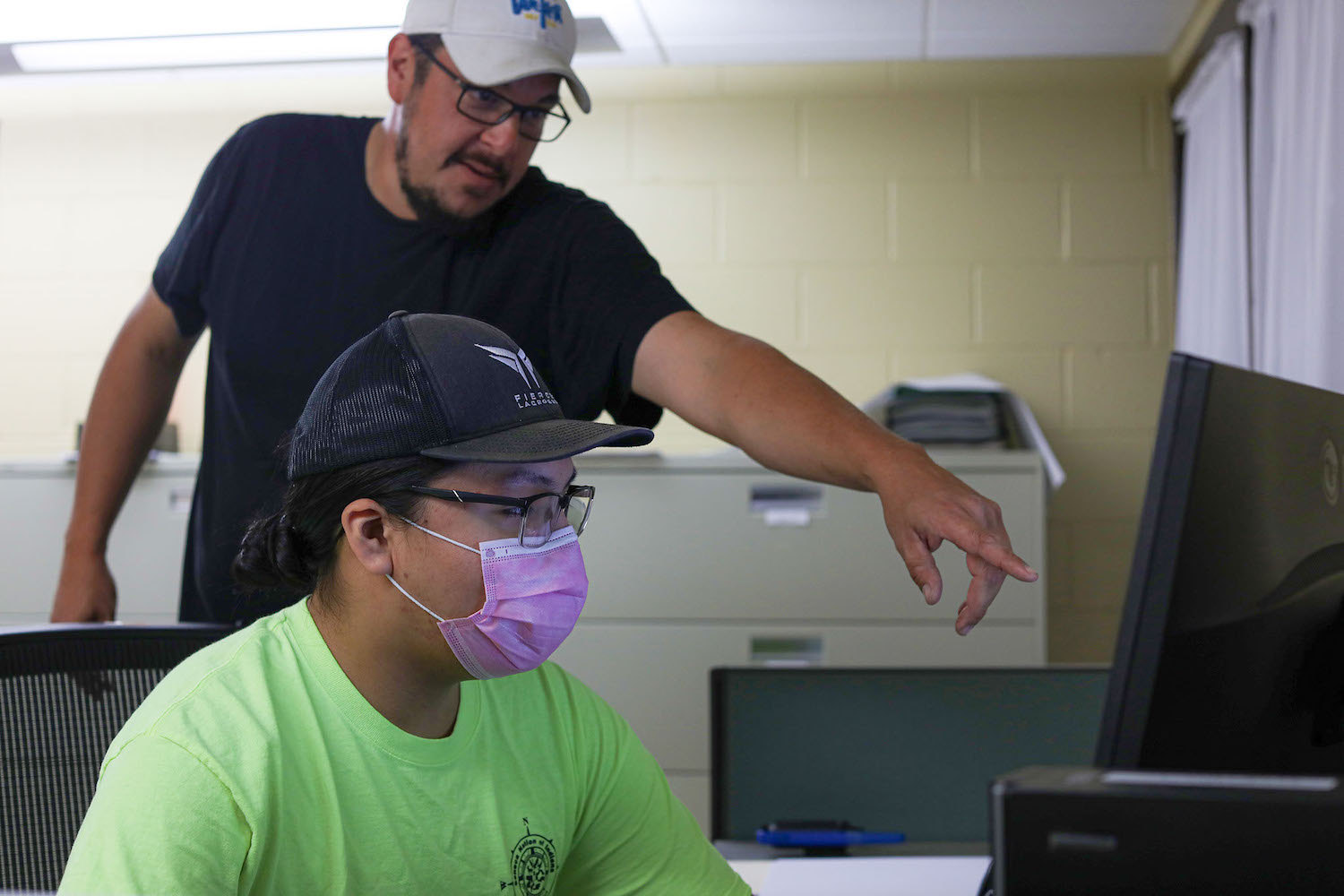
ESG and tribally-owned businesses
The promise of ESG is that it creates an expectation that companies “do more good” while running their businesses. Decision-makers have many options for the partnerships they pursue and the suppliers they use. A genuine commitment to ESG entails considering the added impact that a tribally-owned business has on improving the lives of the Native community it serves.
In addition to the inherent “S” benefit, many tribally-owned businesses are focused on renewable energy projects and environmental sustainability that also address the “E” in ESG. In the clean energy space, there will be an increasing number of tribally-owned businesses looking to partner with larger companies that seek to amplify their ESG commitment.
There are multiple benefits to partnering with a tribally-owned business on a renewable energy project beyond just satisfying your company’s ESG goals. Partnering can also be good for your bottom line, as these businesses provide access to unique advantages conferred by the federal government. Incentives in the Inflation Reduction Act, the Infrastructure and Investment Jobs Act of 2021, the Justice40 Initiative, and Department of Energy grants and loan programs can all significantly reduce the cost of renewable energy projects.
You may also find that the kinds of people who choose to work for a tribally-owned business are more likely to earn your trust as a valued business partner. Those of us that do embrace the responsibility of representing the Native Nations we work for, and we are inspired by the meaningful contributions that our businesses can make. We are always looking for partners and clients that are inspired in the same way.
Images courtesy of the Seneca Media and Communications Center
The Philadelphia Union is Scoring On and Off the Field in Partnership with Subaru
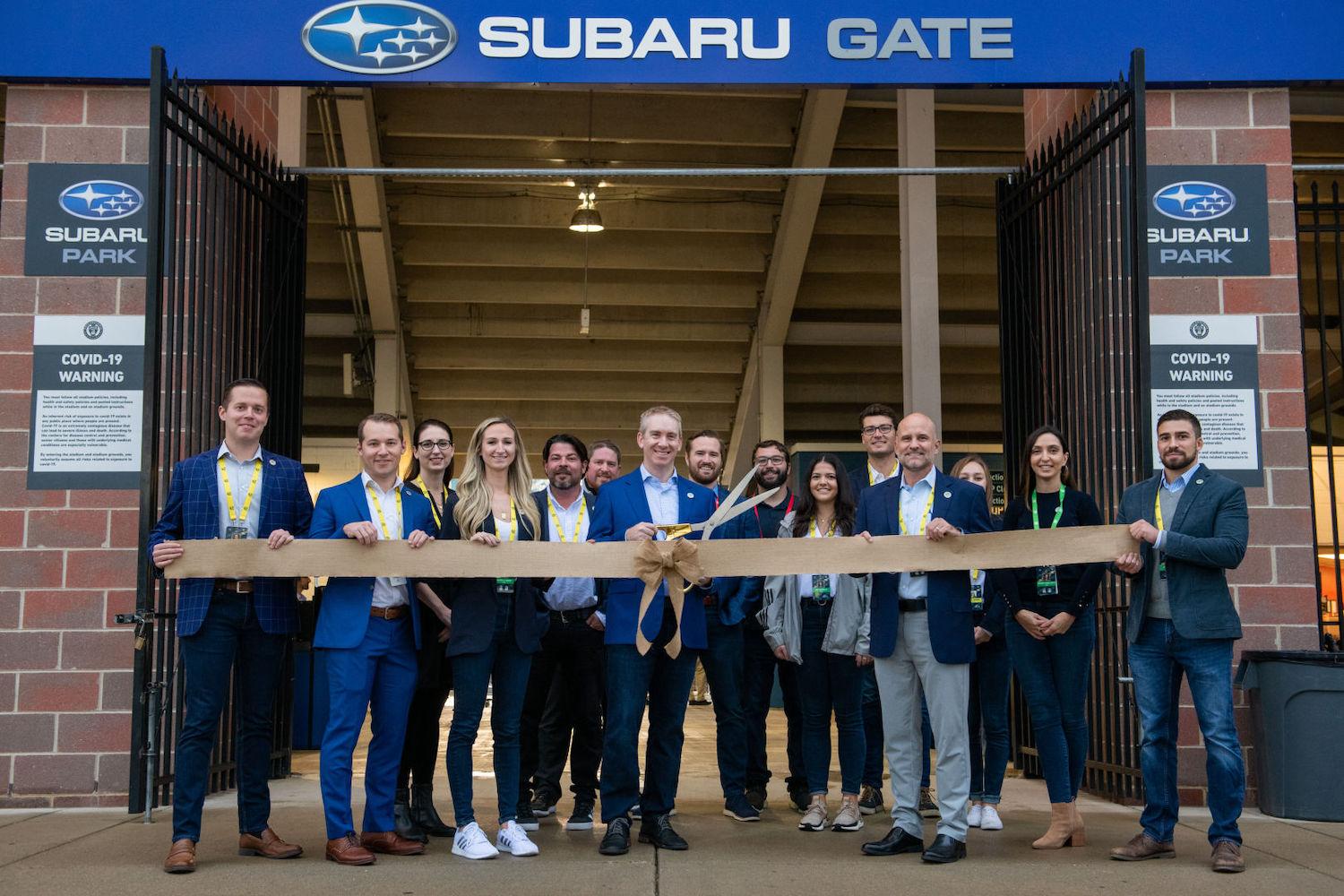
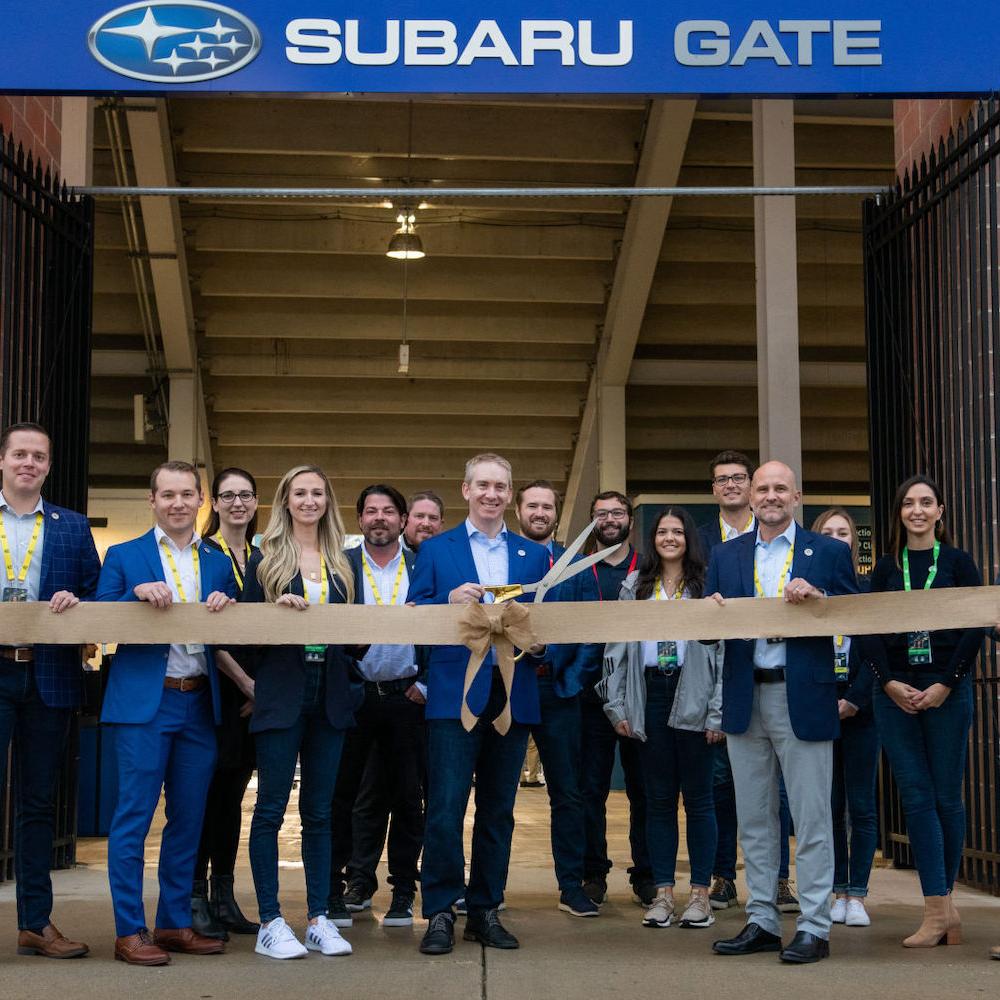
Staff at Subaru Park, home of the Philadelphia Union, attend a ribbon-cutting ceremony to celebrate the stadium's zero-landfill status.
Fans jump out of their seats and roar as their beloved Philadelphia Union soccer club nets a goal at Subaru Park in Chester, Pennsylvania. As fervent fans bask in their team’s success, they can also take pride in knowing each goal scored contributes to a greater cause. The Philadelphia Union and marquee partner Subaru of America plant 25 trees for each goal scored through a partnership with nonprofit One Tree Planted.
The Union’s on-field success in 2022 kept volunteers and community members busy: 79 goals, including a Major League Soccer record-tying 49 goals scored at home, translated into 1,975 trees planted in the greater Philadelphia community and throughout Pennsylvania. And that’s only the start of how these partners work together on environmental sustainability and community growth.

Subaru and the Philadelphia Union: A partnership for good
The tree planting project is just one of the many meaningful community initiatives born out of the partnership between Subaru and the Union. The automaker, based in Camden, New Jersey, and the Chester-based professional soccer team joined forces in 2020 to drive greater impact in the communities where they work.
“When we teamed up with the Philadelphia Union, our biggest priority was to engage with our shared communities in the greater Philadelphia area and support the causes that mean the most to them,” said Alan Bethke, senior vice president of marketing for Subaru of America. “Over three years of partnership, we’ve done just that.”
To maximize the partnership, the Union has embraced the Subaru Love Promise vision and poured energy into initiatives including sustainability, education, pediatric cancer awareness, pet adoption and more. Michelle Rosar, the Philadelphia Union’s vice president of partnership marketing, said success hinges on Subaru and the Union’s “open collaboration” and willingness to accept new challenges.
“There’s never been an idea that’s come across our desk that’s been too big or too small, especially when it comes to the community,” Rosar said.
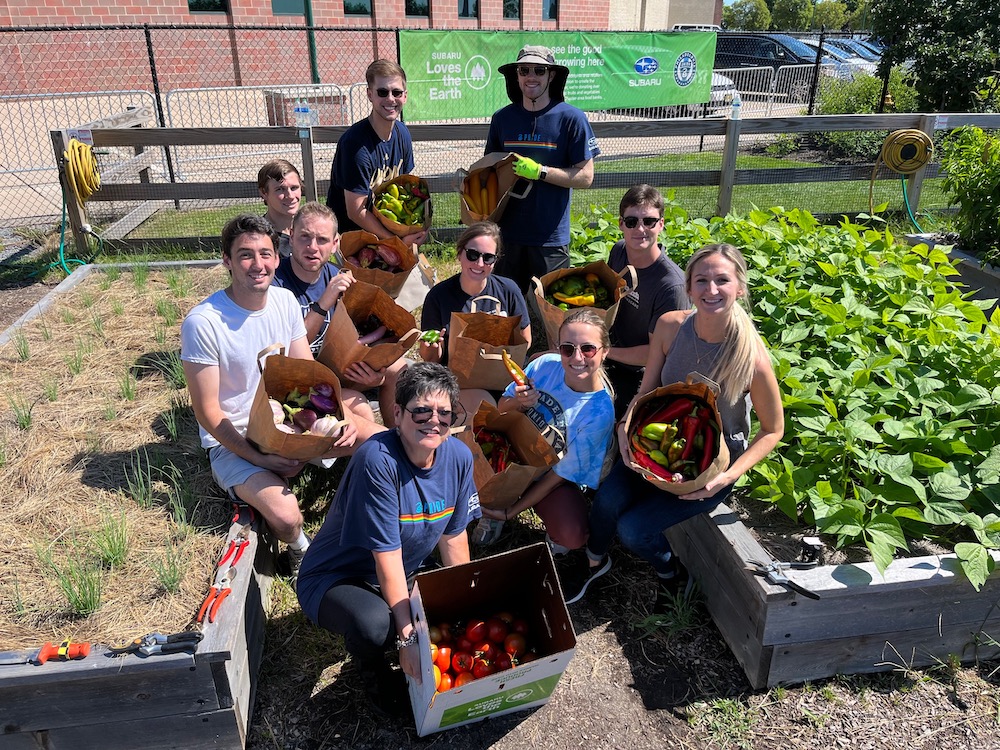
Accomplishing lofty goals
It’s this mentality that inspired Subaru and the Union to transform Subaru Park into the first soccer-specific venue in the United States to achieve zero-landfill status. Since earning the trailblazing zero-waste status in October 2021, the stadium has diverted over 920,356 pounds of waste from landfills, Rosar said.
On the grounds of Subaru Park, employees and volunteers also tend an organic garden that’s yielded more than 5,000 pounds of produce since its first harvest in 2020. In all, Subaru and the Union have donated more than 20,000 servings of fresh organic vegetables from the garden to churches, ministries, and better living centers in and around Philadelphia.
Embracing all things pets, Subaru Park continues to serve as a home for pet adoption events, in which the automaker has helped unite over 300 dogs with loving homes.

Helping Philadelphia youth in the classroom and on the pitch
Elsewhere in the community, the two organizations continue to challenge themselves to do more. Last year, Subaru and the Union scratched plans to adopt a single elementary classroom and instead opted to adopt all 20 classrooms at nearby Stetser Elementary School. Subaru assembled school supply kits for each classroom, provided critical learning materials and sports equipment for more than 250 students, and hosted an engaging and fun back-to-school festival for the school.
The commitment to local youth extends beyond the classroom and onto the soccer field as well. The Gear for Good initiative donated and delivered more than 700 soccer gear items to children in Philadelphia last year. Subaru and the Union also unveiled a mini soccer pitch in Camden, offering local kids a safe space to enjoy the sport and hone their soccer skills.

Committed to the community
As the partnership continues to grow, the organizations are staying true to the communities they serve. “The heart of this partnership is the commitment to the local community,” Rosar said. “It’s in the DNA of both organizations to make a positive contribution to the communities we live in.”
This article series is sponsored by Subaru and produced by the TriplePundit editorial team.
Images courtesy of Subaru and the Philadelphia Union
Microtransit: The Solution to Public Transit Deserts?


Creating accessible, effective public transportation is a major challenge for local governments. Areas that don’t provide sufficient options to meet the needs of disadvantaged and transit-dependent residents, known as transit deserts, are all too common. This is especially true in rural areas, small towns and even residential zones outside of a core city. But cities are not immune.
Where mass transit falls short, workers, seniors, people with disabilities, and those who don’t drive or own a vehicle are left scrambling to get where they need to go. Via Transportation is stepping up with a technology-enabled solution to improve accessibility while reducing overall emissions. The company works with local governments to offer on-demand transportation services with an online platform that is fully customizable to each location’s needs. Via dubs its work TransitTech.

Using tech and microtransit to meet community needs
Via partners with municipalities and transportation agencies to provide microtransit, which is essentially a network of shared transportation with flexible routes and schedules based on rider demand.
Like other popular rideshare services, users request rides through the company's app by providing pickup and dropoff locations. Most cities also have options to book a ride through a phone call or website for people who don't have smartphones.
“Our goal is to extend the reach of existing public transportation by filling access gaps where fixed-route lines cannot easily reach,” Krista Glotzbach, head of West Coast partnerships at Via, told TriplePundit. “Our intelligent algorithms match riders headed in the same direction into one vehicle, creating quick shared trips that minimize detours and maximize efficiency.”
Via’s tech is used in 600 locations around the globe. It serves communities of all sizes and needs, including rural areas like the Blackfeet Indian Reservation of Montana, border towns like Calexico, California, and major cities like Memphis, Tennessee. “They all possess one thing in common: the opportunity to expand access to transportation through the use of technology," Glotzbach said.
Fleet flexibility
There is no one-size-fits-all formula, so Via makes ongoing recommendations and configures its technology based on community needs, Glotzbach said. The company recommends fleet sizes, service zones and service hours to allow municipalities to serve riders efficiently. Most of these fleets rely on independent contractors as drivers.
The vehicles also vary with need. Minivans that can carry up to seven riders are common, and hybrids and electric vehicles are increasingly utilized, Glotzbach said.
“We also typically recommend including wheelchair-accessible vehicles to ensure the service is inclusive and accessible to riders of all needs,” she said. Removing that barrier is important for people who rely on mobility devices because limited access to transportation can drastically impact their independence, access to gainful employment and ability to see medical providers — all of which can lead to isolation.
Access and independence at a low cost
Seventy percent of people with travel-limiting disabilities say they're forced to avoid or reduce day-to-day travel because existing systems don't work for them, according to the U.S. Bureau of Transportation Statistics. By offering on-demand transportation services at affordable prices — generally $2 to $3 per ride — Via’s microtransit options are meeting needs and changing lives.
The company’s partnership in Salem, Massachusetts, opened the city up to people with disabilities, low-income residents and others who rely on public transportation. Public transit riders in the city can now reach 66 percent more jobs thanks to the microtransit system, and 70 percent of those who used the system since it launched in 2020 do not own their own vehicle.
About half of the riders utilizing the transportation partnership with the Blackfeet Nation in Montana are seniors or people with disabilities who are not charged for the service. Other riders pay $1 for door-to-door service across the reservation and the adjacent rural areas. Since the program began, ridership has almost doubled and rides through private parties have reduced by 51 percent.
Reducing emissions
Shared rides and less reliance on private vehicles can cut carbon dioxide emissions — creating healthier, less polluted communities and reducing climate impact, Over half of the trips taken through Via’s partnership in Calexico, California, would have otherwise used a private vehicle or taxi, Glotzbach said. That translates to a 51 percent reduction in emissions per passenger mile. “Our partnerships often quickly become an essential, highly resilient part of a community’s infrastructure,” she said.
The High Valley Transit partnership near a ski resort in Summit County, Utah, is another example. The service is set to provide its 2 millionth ride in under two years of operation. “Many of our riders are local workers and resort staff who use High Valley Transit’s services to access crucial job opportunities,” Glotzbach said. “Others are tourists who are just seeking a car-free way to navigate the slopes. Despite different reasons for riding, everyone has access to a tech-enabled transit network that provides efficient coverage that can flex with the seasons.”
Tech services are leading the way toward more inclusive and less pollution-heavy transportation. Via helped its partners gain access to $30 million in grants — supplementing government funding and fares — to put microtransit fleets on the road. The company plans to continue expanding its partnerships and can launch in a new location within eight weeks of starting a contract.
Images Courtesy of Via Transportation
ESG Amidst Inflation: 7 Governance Mechanisms That Drive Value Creation in the Consumer Packaged Goods Industry
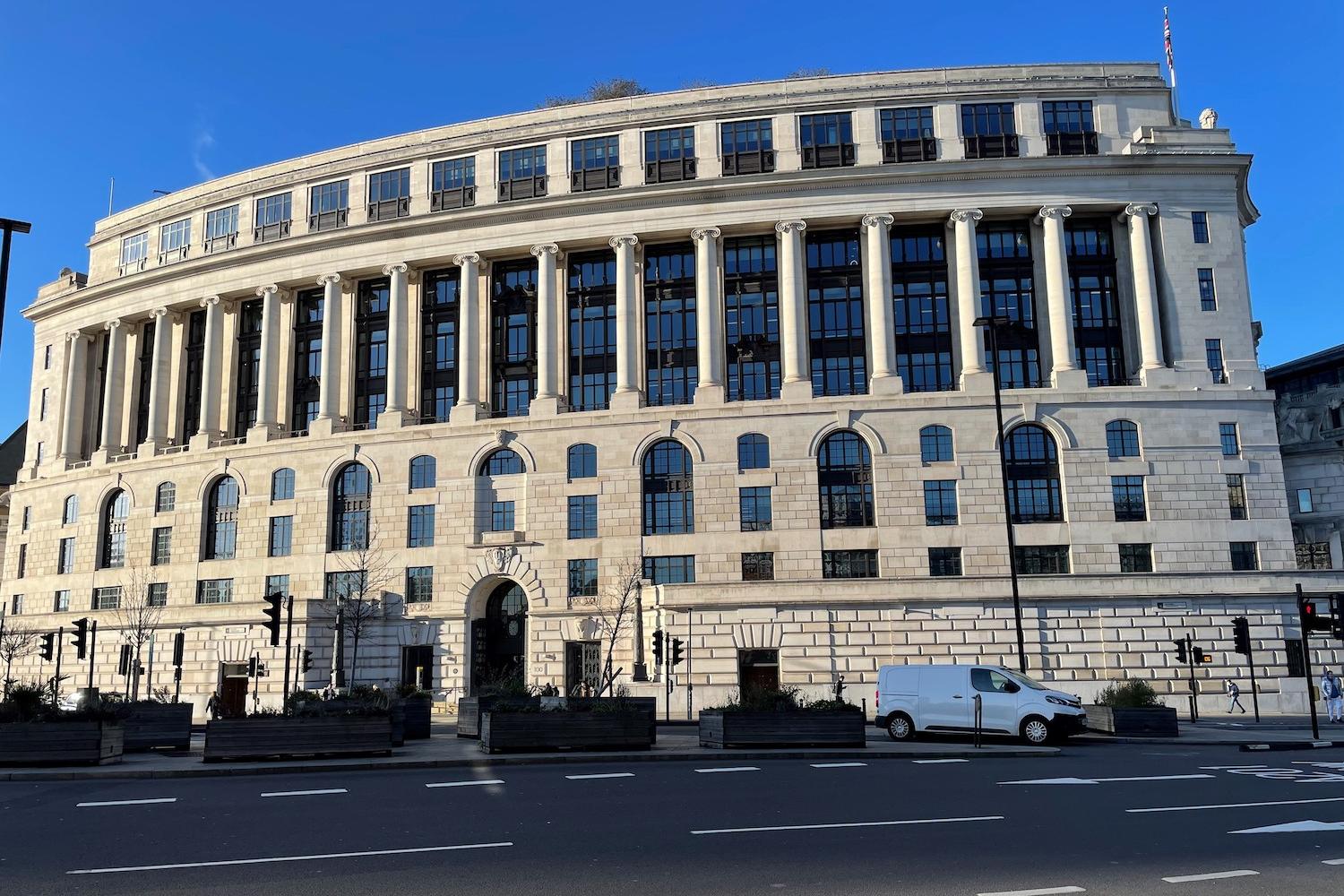

Unilever's corporate headquarters in Blackfriars, London.
Running a profitable business in the consumer packaged goods (CPG) industry isn’t easy – especially when inflation has consumers pinching pennies and hunting for basement bargains. Add that to the list of challenges the CPG industry is facing, which include lingering pandemic hurdles and conflict-zone embargoes that suppliers and manufacturers are obliged to observe.
Meanwhile, companies are under pressure to monitor their risks and impacts on environmental, social and governance (ESG) issues. That means not just finding and monitoring their ESG data, which can be a huge task on its own, but also developing a strategy complete with targets and accountability measures to reduce ESG risks and minimize negative impacts from business activities.
So, how in the world are business leaders supposed to do all of that?
The answer lies in the “G” of ESG. Strong corporate governance and commitment from C-suite executives are how organizations can manage today’s business requirements and thrive under the opportunities that this new landscape presents. After all, ESG-focused funds proved resilient even amidst recession fears — attracting $37 billion of net inflows in the fourth quarter of 2022, compared to $200 billion of net withdrawals in the broader market, according to research from Morningstar.
Which governance mechanisms drive ESG strategy?
TriplePundit sat down with Jonathan Gill, global head of sustainability advocacy at Unilever, to gain insight into the governance mechanisms that drive ESG strategy in the CPG industry. The key takeaway? ESG strategy must be integrated into overall business strategy, with the two components working in coordination to drive success across all brands.
1. Integrating ESG into business strategy
If there’s one thing to know about driving a successful ESG strategy, it’s this: ESG strategy has to be integrated into overall business strategy. Without integration, the two objectives will be competing for priority rather than working in tandem.
“Unilever’s purpose is all about making sustainable living commonplace. So that’s kind of the North Star, the way we think about everything,” Gill explained. “It’s been years since we had separate strategies for sustainability and for business. It’s one integrated strategy.”
2. Business structure facilitates ESG performance
For Unilever, this integrated strategy — which it calls the Unilever Compass — is “locked into the governance side of things,” Gill said. "The board oversees it. We have an external advisory council to make sure we’re making the right decisions and choices. It’s locked into our remuneration, but also into our structure.”
In the CPG industry, a parent company will own many different brands. While those brands have different priorities in business and in ESG strategy, the structure and the relationship between the parent company and its brands needs to facilitate ESG progression.
“We’ve got five semi-autonomous business units within Unilever, and each and every one of those business units have sustainable priorities within them,” Gill continued. "That’s agreed by the most senior level, by the executives, so the delivery is really embedded into it.”
3. Ensuring all stakeholders have their voices heard
When it comes to actually developing an ESG strategy and identifying key performance indicators (KPIs), it’s crucial to have a clear understanding of what is important to stakeholders from the beginning and throughout an organization’s ESG journey.
Whether that’s from investors, customers, employees, brands or the broader community, understanding the expectations of stakeholders will align and drive ESG strategy, Gill said. For example, the company holds bi-weekly sessions with employees and executives and operates 37 “People Data Centers” around the world to keep its finger on the pulse of what customers are looking for — among many other ways in which it engages with stakeholders.
Organizations that listen to stakeholder voices are better positioned to perform well on the metrics that matter, driving ESG performance and business growth.

4. Brands develop their own ESG priorities
It can be tempting to delegate to brands what their ESG priorities should be and how they should approach the subject. Parent companies are ultimately responsible for their brands, after all. But it is much better when those companies facilitate that development and allow brands to grow their ESG priorities organically.
“Within the Unilever Compass, the three priorities we have around sustainability are planet, health and wellbeing, and social. Our brands’ purposes generally fall within those three spaces, but we don’t have a formal way to make sure brands are focusing in specific areas,” Gill explained. “The brands themselves are responsible for identifying what their purpose is and delivering that. It has to be organic, it has to be real, and therefore top-down just wouldn’t work.”
5. Transparent accounting
When asked about the value of transparent accounting, Gill said, “We think it’s quite an important lever for change to accelerate the transition toward sustainability.”
As global ESG reporting and accounting standards are being hashed out around the globe, transparent accounting is not only important to today’s investors and consumers, but it’s also soon to become a requirement. Businesses that incorporate this practice before legislation is finalized will benefit from the ease of transition to mandatory reporting, as well as from the influx of investor dollars into ESG funds. Having the right technology in place to gather, track and report on ESG data will be essential for businesses in the future.
6. Transparent ESG goals, progress and communication
Transparency in ESG goals, progress and communication is vital for highly visible, consumer-facing companies like Unilever. The company reported regularly on the progress of its 10-year sustainability strategy, the Sustainable Living Plan, from 2010 to 2020. Some of its targets were reached, some were narrowly missed, and others fell well short. Whatever the case, the company was open about its progress and the challenges it faced along the way — and it continues to report on the new Unilever Compass strategy.
This type of transparency builds trust. Trusted voices in the ESG sphere are exactly what investors and consumers are looking for amidst the tsunami of ESG information being released by companies looking to attract today’s consumers and investors.
7. Accountability measures
Finally, accountability measures must be built into the structure of the organization. Naturally, the market will act as its own accountability measure as investors and consumers pull money from companies that are underperforming and redirect those funds to companies with stronger ESG strategies.
Internally, Unilever ties ESG performance into its executive remuneration scheme. “We have essentially eight metrics, and if you perform well on those, your bonus is higher,” Gill said. “If you’re motivated by money, then obviously you’ll be motivated to deliver on those sustainability goals.”
Not everyone is motivated by money, but it’s a strong measure to incentivize performance and show commitment to ESG strategy.
A look to the future of ESG and governance challenges
One of the biggest challenges facing business executives in all sectors with regards to ESG and corporate governance is the uncertainty of reporting requirements. There are different global reporting standards, all of which are similar but none of which are mandatory — at least not yet.
“The challenge we’ve got at the moment is there are three big standards — from the International Sustainability Standards Board (ISSB), the U.S. Securities and Exchange Commission (SEC) and the European Union (EU) — and they are big beasts of information that need to be prepared,” Gill explained. “Making them standardized — not necessarily the same, but interoperable — would be very helpful, and we’re very keen to see them being mandatory for all companies above a certain size.”
The biggest challenge in Gill’s eyes is that with the sense of urgency to enact mandatory reporting and organizations rushing to comply, there are likely to be some errors in reporting, or errors made by assurers on the audit side that could provide the anti-ESG cohort some extra fuel for their fire. In the midst of our climate emergency, the onus is on legislators to not only get the requirements in place quickly, but to make sure it’s done right.
This article series is sponsored by Workiva and produced by the TriplePundit editorial team.
Regardless of inflation risks, shifts in the regulatory environment or industry challenges, ESG is here to stay. Our partner on this series, Workiva, offers an end-to-end solution to help companies unlock value. You can find out more here.
Images courtesy of Unilever
Now is the Time for Investors to Engage with Companies on Nature


With biodiversity loss quickly accelerating across the globe, investors increasingly recognize the quantifiable risks in their portfolios — and many are engaging with companies to take bold actions that reduce their impact on nature.
Over half of the world’s GDP ($44 trillion of economic value generation) is at risk from the looming danger posed by nature loss, and supply chains for critical resources that depend on vital natural ecosystems are under growing threat. Between $235 billion and $577 billion of global crop outputs are at risk annually from pollinator loss alone, which is an operational risk for companies that source agricultural commodities. The global community cannot afford to let these tremendous risks escalate further.
Fortunately, there is good news for investors seeking to capitalize on this momentum and confront the substantial risks in their portfolios. If we implement policies and measures that protect nature, we can avoid an estimated global GDP decline of $2.7 trillion annually by 2030, according to the World Bank.
Investors are responding in kind by taking important steps to address nature and biodiversity loss as shown by the launch of bold new initiatives like Nature Action 100. Launched in December, the global investor engagement partnership with leading sustainability groups aims to drive greater corporate ambition and action to reduce nature and biodiversity loss.
There are several essential actions that companies must take to ensure they are effectively addressing their nature-related risks. Thanks to new benchmarks and frameworks, companies can now knowledgeably execute those actions while investors can gain the insights they need to inform their investment decisions and engagements on nature with the businesses in their portfolios.
Companies should be evaluating and disclosing nature-related risks and opportunities. The Taskforce on Nature-related Financial Disclosures, a market-led, science-based initiative backed by members representing $20.6 trillion in assets, is developing a framework that will help companies with this assessment and disclosure. Over 150 companies and financial institutions worldwide have piloted the framework, which will be finalized in September. The Taskforce also created an assessment process that companies can use to analyze the risks they face in specific ecosystems and to manage those impacts, as a complement to their disclosure recommendations.
Companies must also set a commitment to address nature and biodiversity loss by creating actionable and accountable goals. The Science Based Targets Network looks to build on the adoption of science-based targets for climate and equip companies to set similar targets for protecting nature and biodiversity. The coalition released draft technical guidance for companies to measure, set and disclose freshwater targets for public consultation late last year. Most recently, the initiative concluded a public consultation period on a draft of their land target’s technical guidance focused on the protection and restoration of ecosystems.
In addition, investors can track progress being made by companies within industries on their actions to tackle nature and biodiversity loss. The World Benchmarking Alliance’s Nature Benchmark makes this tracking possible by ranking major companies on their efforts to protect nature and biodiversity. By 2023, the Alliance will have benchmarked 1,000 companies across 22 industries.
The development of these frameworks and benchmarks further enables effective investor engagement with companies on the immense crisis of nature and biodiversity loss. Important global initiatives like Nature Action 100 and others in the biodiversity space will leverage these new capabilities to support investors in taking on the challenge of driving urgent corporate action and reduce risks from nature loss.
While we can applaud progress to date, companies are urged to continue to act ambitiously on their nature-based risks. If we do not, it will become increasingly difficult to reverse the damage to our planet.
Image credit: Wim van 't Einde and Guillaume Bolduc via Unsplash
This Consultancy Connects Diverse Startups with Legacy Companies to Drive Innovation


Companies trying to spark more innovation often overlook the creativity that comes from connecting with enterprise-ready startups — especially those that bring diversity to the table. That’s the fresh take on traditional innovation models offered by the independent innovation consultancy VentureFuel.
VentureFuel partners established companies with startups to tackle two problems at once: stifled innovation within larger companies and abysmally low levels of diversity in startup funding.
The consultancy builds programs that use “external innovation” provided by the startups. “Our programs focus on changing the behaviors and beliefs necessary to unlock new sources of growth,” Shira Averbuch, vice president of innovation and partnerships at VentureFuel, told TriplePundit.
The partnerships help companies address their biggest strategic challenges faster — with less risk and greater impact than traditional innovation models — while helping startups develop at the same time, Averbuch said.
For example, VentureFuel has connected Dick's Sporting Goods with relevant startups to enhance the customer experience with tools like e-commerce and artificial intelligence (AI). Comcast NBCUniversal also works with the consultancy on startup partnerships, including a recent accelerator series focused on generative AI tools (think: ChatGPT). Other legacy corporate partners include Chevrolet, Bacardi, FedEx, Hulu and JPMorgan Chase.
Startups in VentureFuel’s global innovation network reported over $12 million in revenue from over 100 corporate partnerships and are now collectively valued at over $2 billion. “The reason we believe our model works so well is because it provides value across all sides of the ecosystem,” Averbuch said. “We can act as a bridge between how large companies operate and small startups function, because we speak both languages.”
Why diversity is essential to innovation
The lack of diversity in venture capital (VC) funding is well documented. Women-founded startups raised 2.1 percent of all VC funds in 2022, according to a TechCrunch market analysis. That’s a 53 percent decline from a year earlier.
VC funding for Black entrepreneurs — typically less than 2 percent of total VC funding — also fell 45 percent last year, CNBC reported. Startups founded by Black women receive an even smaller share at less than 1 percent.
That’s why diverse representation is at the heart of VentureFuel’s model, starting with its own staff — 70 percent of whom are women, Averbuch said.
“We believe that diversity and equal access to capital are fundamental to healthy and successful innovation and a healthy innovation ecosystem,” she said. “Most of our programs look at diversity and inclusion as a component for selecting the startups that our clients work with — and what we see is that different backgrounds and perspectives lead to more innovative outcomes.”
Connecting “rogue women” entrepreneurs
Around 90 percent of all venture capitalists are men, 97 percent of all VC dollars go to male founders, and 86 percent of all startups with VC funding have only men on their teams, according to VentureFuel.
Looking to change these statistics, the Rogue Women’s Fund invests in women-led tech startups across the U.S. The fund hosts invite-only events across the country to bring together corporate executives, startup founders and investors.
A great deal of benefits come from increased diversity in startups and more established companies. Diverse companies are more likely to retain talent, identify risks and be more profitable, according to the World Economic Forum.
“What we've seen time and again is that diverse points of view — whether from diversity of backgrounds, situations or lived experiences — enable new and different thinking, which spurs innovation,” Averbuch said.
The balance is slowly shifting
Bringing diversity into the venture capital world is a slow journey. But Averbuch sees more effort and energy going toward bridging those gaps that will have beneficial ripple effects.
“While I can't speak for the hiring practices at established companies, I do know that when female founders are able to raise funds and scale the companies they've started, they're often more likely to hire diverse staff," she said. What works for VentureFuel is leaning into networking and mentorship as a solution to the imbalance.
Startups develop smart ways to use tech for greater diversity
The tools that underrepresented startup founders develop can also help larger companies to improve their own diversity. For example, some startups are leveraging new technologies to overcome challenges in hiring, such as AI tools that can read through job descriptions to identify and minimize unconscious bias. “This technology can essentially flag that the way a job description is written might be less inclusive, so we can recommend changing it to other phrasing” Averbuch said.
Other startups are using technology to reduce barriers in the digitization of networks. One example, Tap, is a business marketplace app that brings together entertainment executives and creatives. The app’s AI technology cuts expenses, time and effort by 420 percent, according to the company.
“Networking no longer means you need to be in the same location as someone else,” Averbuch said. “The digitization of a lot of these networks and tools has enabled people from all over the world — from different locations and different perspectives — to come together and has provided them with opportunities.”
Image Credit: Christina/Unsplash